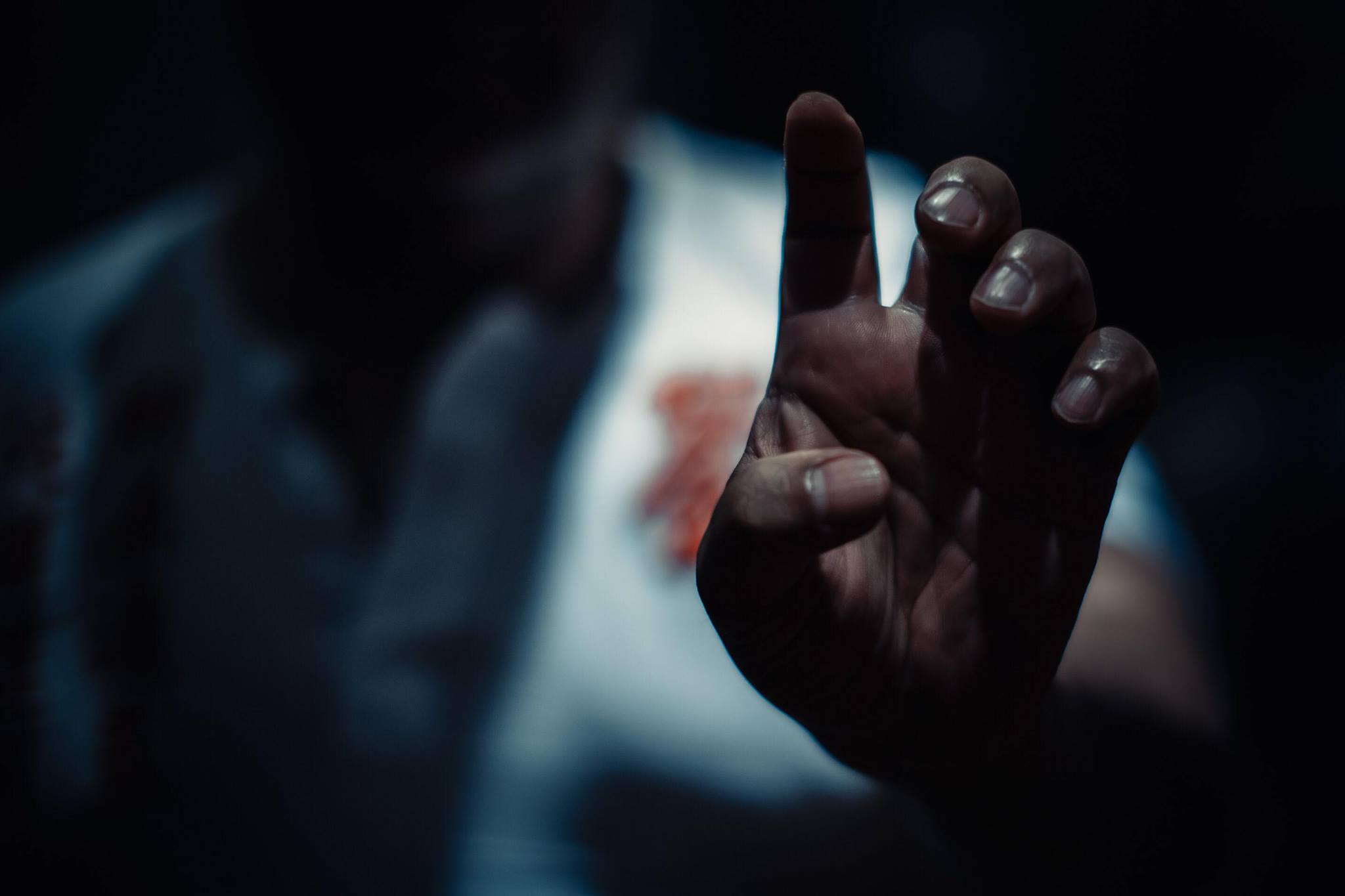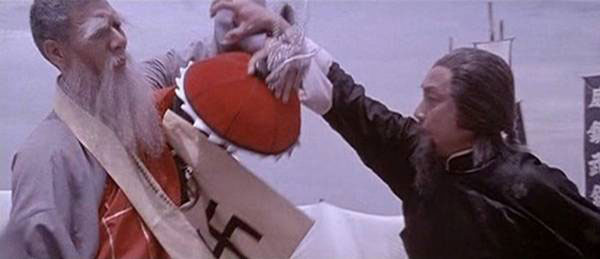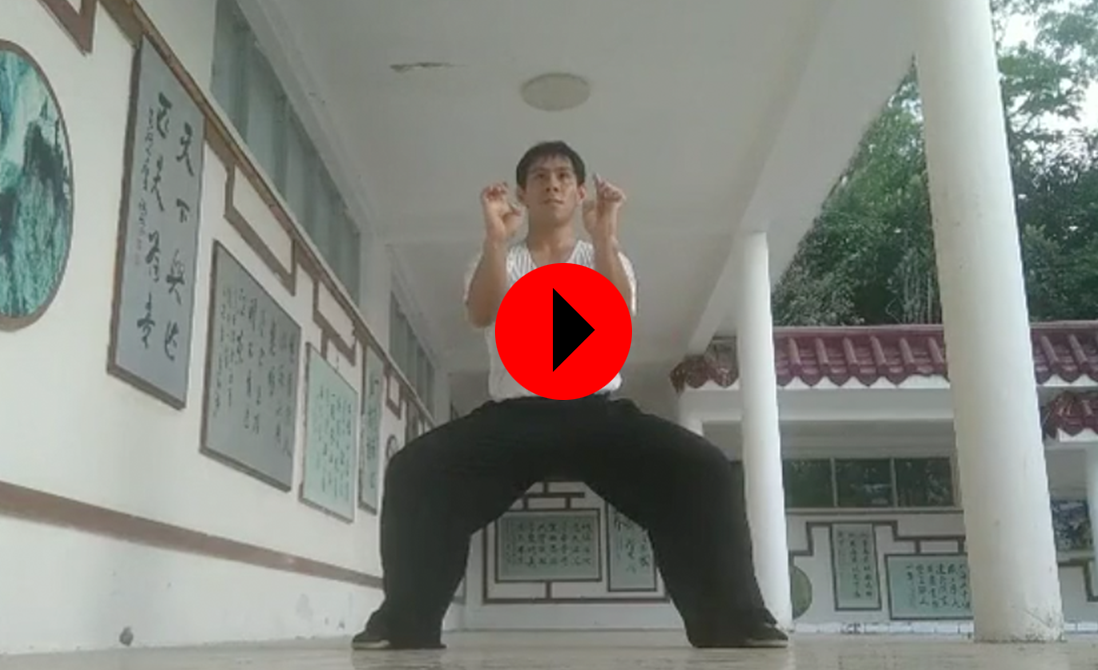The Hung Gar style
(Also known as Hung Kuen and Hung Gar Kuen) In the 17th Century, soldiers from the Qing Army burned the Shaolin temple to the ground, believing the Buddhist monks were harbouring patriots of the Ming dynasty. The ten Kung Fu brothers who were hiding in the temple managed to escape. These were Hung Hei Kwun, Fong Sai Yuk, Fong Hau Yuk, Fong Mei Yuk, Wu Wai Gong, Tong Chin Gan, Chun Mai Luk, Lee Wai Kuk, Tse Ah Fook and Luk Ah Choy. Hung Hei Kwun was a keen martial artist who had developed the “Hung Gar” system of fighting. He taught the new style to Luk Ah Choy, who passed it on to Wong Tai and Wong Kei Ying. Years later, Hung Gar was made famous by Wong Fei Hung (1847 –1924), the Chinese physician and folk hero who became the acknowledged Master of the style. Eventually the style became recognised as one of the Famous Five Southern Styles, these being Hung, Lau, Choi, Lee and Mok.  The hallmarks of the Wong Fei Hung lineage of Hung Gar are deep low stances, such as the Sei Ping Ma ‘horse’ stance, and strong hand techniques including the Bridge Hand and the Tiger Claw.
Traditionally, students of Hung Gar would spend anything from three months to three years in ‘stance’ training before learning any of the Hung Gar forms. This could include sitting in a horse stance for several hours at a time. Each form could then take up to a year to learn, and only when both stance and forms were mastered could the student move on to weapons training.
The hallmarks of the Wong Fei Hung lineage of Hung Gar are deep low stances, such as the Sei Ping Ma ‘horse’ stance, and strong hand techniques including the Bridge Hand and the Tiger Claw.
Traditionally, students of Hung Gar would spend anything from three months to three years in ‘stance’ training before learning any of the Hung Gar forms. This could include sitting in a horse stance for several hours at a time. Each form could then take up to a year to learn, and only when both stance and forms were mastered could the student move on to weapons training. These days it would be unlikely for a student to agree to pay an instructor to teach him the same stance for months, or the same form for a year. However it is quite common for instructors to stick to the traditional order, with beginners learning the basics of stance training before they move on to forms.
Some mistakenly believe that Hung Gar is all about developing brute force and physical skills. In fact, as students progress with Hung Gar they discover that there is a tremendous focus on internal resilience too.
When Wong Fei Hung was training with his father Wong Kei Ying (one of the famous Ten Tigers of Canton), he learned many empty-hand forms: Single Hard Fist, Double Hard Fist, Taming the Tiger Fist, Mother & Son Butterfly Swords, Angry Tiger Fist, Fifth Brother Eight Trigram Pole, Flying Hook and Black Tiger Fist.
These days it would be unlikely for a student to agree to pay an instructor to teach him the same stance for months, or the same form for a year. However it is quite common for instructors to stick to the traditional order, with beginners learning the basics of stance training before they move on to forms.
Some mistakenly believe that Hung Gar is all about developing brute force and physical skills. In fact, as students progress with Hung Gar they discover that there is a tremendous focus on internal resilience too.
When Wong Fei Hung was training with his father Wong Kei Ying (one of the famous Ten Tigers of Canton), he learned many empty-hand forms: Single Hard Fist, Double Hard Fist, Taming the Tiger Fist, Mother & Son Butterfly Swords, Angry Tiger Fist, Fifth Brother Eight Trigram Pole, Flying Hook and Black Tiger Fist.  Wong Fei Hung combined these forms with techniques he had learned from other Masters into the four sophisticated empty-hand routines that make up the main pillars of Wong Fei Hung lineage Hung Gar: Taming the Tiger Fist, Tiger Crane Paired Form Fist, Five Animal Fist and Iron Wire Fist.
Fifth Brother Eight Trigram Pole
Wong Fei Hung was known for his Fifth Brother Eight Trigram Pole, which appears on the curriculum of the Lau family branch of the Wong Fei Hung lineage. .
Wong Fei Hung combined these forms with techniques he had learned from other Masters into the four sophisticated empty-hand routines that make up the main pillars of Wong Fei Hung lineage Hung Gar: Taming the Tiger Fist, Tiger Crane Paired Form Fist, Five Animal Fist and Iron Wire Fist.
Fifth Brother Eight Trigram Pole
Wong Fei Hung was known for his Fifth Brother Eight Trigram Pole, which appears on the curriculum of the Lau family branch of the Wong Fei Hung lineage. .
 The hallmarks of the Wong Fei Hung lineage of Hung Gar are deep low stances, such as the Sei Ping Ma ‘horse’ stance, and strong hand techniques including the Bridge Hand and the Tiger Claw.
Traditionally, students of Hung Gar would spend anything from three months to three years in ‘stance’ training before learning any of the Hung Gar forms. This could include sitting in a horse stance for several hours at a time. Each form could then take up to a year to learn, and only when both stance and forms were mastered could the student move on to weapons training.
The hallmarks of the Wong Fei Hung lineage of Hung Gar are deep low stances, such as the Sei Ping Ma ‘horse’ stance, and strong hand techniques including the Bridge Hand and the Tiger Claw.
Traditionally, students of Hung Gar would spend anything from three months to three years in ‘stance’ training before learning any of the Hung Gar forms. This could include sitting in a horse stance for several hours at a time. Each form could then take up to a year to learn, and only when both stance and forms were mastered could the student move on to weapons training. These days it would be unlikely for a student to agree to pay an instructor to teach him the same stance for months, or the same form for a year. However it is quite common for instructors to stick to the traditional order, with beginners learning the basics of stance training before they move on to forms.
Some mistakenly believe that Hung Gar is all about developing brute force and physical skills. In fact, as students progress with Hung Gar they discover that there is a tremendous focus on internal resilience too.
When Wong Fei Hung was training with his father Wong Kei Ying (one of the famous Ten Tigers of Canton), he learned many empty-hand forms: Single Hard Fist, Double Hard Fist, Taming the Tiger Fist, Mother & Son Butterfly Swords, Angry Tiger Fist, Fifth Brother Eight Trigram Pole, Flying Hook and Black Tiger Fist.
These days it would be unlikely for a student to agree to pay an instructor to teach him the same stance for months, or the same form for a year. However it is quite common for instructors to stick to the traditional order, with beginners learning the basics of stance training before they move on to forms.
Some mistakenly believe that Hung Gar is all about developing brute force and physical skills. In fact, as students progress with Hung Gar they discover that there is a tremendous focus on internal resilience too.
When Wong Fei Hung was training with his father Wong Kei Ying (one of the famous Ten Tigers of Canton), he learned many empty-hand forms: Single Hard Fist, Double Hard Fist, Taming the Tiger Fist, Mother & Son Butterfly Swords, Angry Tiger Fist, Fifth Brother Eight Trigram Pole, Flying Hook and Black Tiger Fist.  Wong Fei Hung combined these forms with techniques he had learned from other Masters into the four sophisticated empty-hand routines that make up the main pillars of Wong Fei Hung lineage Hung Gar: Taming the Tiger Fist, Tiger Crane Paired Form Fist, Five Animal Fist and Iron Wire Fist.
Fifth Brother Eight Trigram Pole
Wong Fei Hung was known for his Fifth Brother Eight Trigram Pole, which appears on the curriculum of the Lau family branch of the Wong Fei Hung lineage. .
Wong Fei Hung combined these forms with techniques he had learned from other Masters into the four sophisticated empty-hand routines that make up the main pillars of Wong Fei Hung lineage Hung Gar: Taming the Tiger Fist, Tiger Crane Paired Form Fist, Five Animal Fist and Iron Wire Fist.
Fifth Brother Eight Trigram Pole
Wong Fei Hung was known for his Fifth Brother Eight Trigram Pole, which appears on the curriculum of the Lau family branch of the Wong Fei Hung lineage. .

